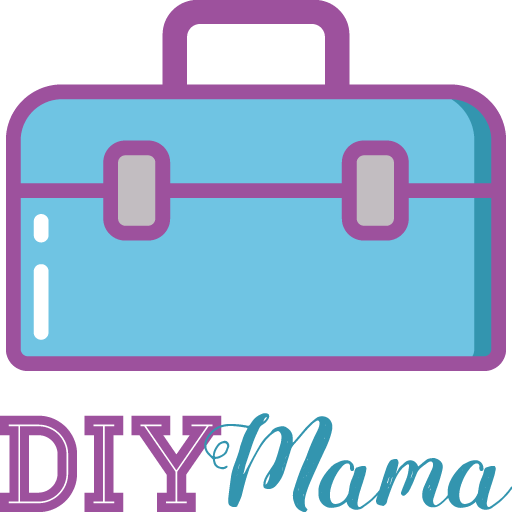Guest article from Evergreen Cleaning Company

Photo by Pixabay.
If you’re a mom, you know allergies don’t have an “off” season. While spring and summer are famous for sneezing fits and itchy eyes, allergens can sneak into your home year-round. Winter might seem like a reprieve, but spending more time indoors with closed windows can actually make things worse. Dust mites, pet dander, and even mold can flourish in the cozy confines of your home, making allergy season feel like it never ends.
The good news? With a few smart cleaning habits and a better understanding of what’s triggering those sniffles, you can transform your home into an allergy-safe sanctuary, no matter the time of year.
Why Allergies Are More Than a Nuisance
Sure, allergy symptoms like sneezing and itchy eyes are annoying, but the impact of allergens goes far beyond discomfort. The American Academy of Allergy, Asthma & Immunology reports some eye-opening stats:
- 40% of children experience allergic rhinitis, with symptoms ranging from congestion to irritated eyes.
- Indoor allergens trigger asthma in up to 60% of asthmatic children, making clean air essential.
- Prolonged allergen exposure can lead to chronic respiratory issues, especially for kids.
For moms, this means that keeping allergens in check isn’t just about cleaner spaces—it’s about healthier, happier kids.
Where Allergens Hide in Plain Sight
Even the tidiest homes can harbor hidden allergens. In winter, when we seal ourselves indoors, dust mites and pet dander become more concentrated. Heating systems can spread mold spores or stir up dust that’s been lurking in vents. Add in the clutter and chaos of family life, and allergens have plenty of places to hide.
But don’t worry. Once you know where allergens thrive, tackling them becomes much easier.
Clean Air, Happy Kids
The first step to combating allergies is improving your home’s air quality. Swapping out your HVAC filters for high-efficiency particulate air (HEPA) filters is an easy win. These filters trap microscopic particles like dust, pollen, and dander instead of letting them circulate. If you use heating systems heavily in the colder months, remember to clean or replace filters more often.
For extra help, consider a portable air purifier for bedrooms or play areas. They’re especially useful during flu season, too! Also, don’t forget to wipe down vents and air returns regularly—dust loves to build up there.
Bedding and Soft Surfaces: The Allergen Magnets
Soft textiles like bedding, rugs, and curtains are cozy, but they’re also magnets for dust mites and pet dander. Regular upkeep can make a big difference:
- Wash sheets and pillowcases weekly in hot water. This kills dust mites and removes allergens.
- Use allergen-proof covers on mattresses and pillows. They act like a shield against mites.
- Swap out heavy curtains for washable ones, or vacuum them regularly if laundering isn’t an option.
Even your kids’ beloved stuffed animals can harbor allergens. A quick fix: freeze them in a plastic bag overnight to kill dust mites, then toss them in the wash for a refresh.
Carpets and Floors: The Hidden Culprits
While hard floors like wood or tile are easier to keep allergen-free, carpets can work against you. Vacuuming once a week with a vacuum equipped with a HEPA filter helps reduce allergens.
For a deeper clean, use a steam cleaner or rent a carpet shampooer. If DIY carpet cleaning feels daunting, consider hiring a professional—it’s worth it for a truly allergen-free reset.
Managing Pet Dander Without Losing Your Sanity
We all love our furry friends, but pet dander is a top allergen in many homes. During the colder months, pets spend more time indoors, shedding dander onto furniture and floors. To keep this under control:
- Brush your pets outdoors whenever possible to reduce shedding inside.
- Give your pets regular baths to minimize dander. (Check with your vet to avoid over-washing.)
- Keep pets off furniture or designate pet-free zones, like bedrooms.
- Use a handheld vacuum to quickly clean up pet hair and dander from soft surfaces.
Mold and Humidity: The Winter Threat
Winter often brings higher indoor humidity, which can lead to mold growth if left unchecked. Bathrooms, basements, and laundry rooms are particularly vulnerable. Keep your home’s humidity level between 30–50% by using a dehumidifier.
For bathrooms, natural cleaners like vinegar and baking soda are your best friends. These simple ingredients can tackle mold in grout and tiles without harsh chemicals. Don’t forget to replace or wash shower curtains, especially if you notice mildew spots.
Don’t Forget the Entryways
Every time someone walks through your front door, they bring allergens with them—dirt, dust, and even pollen. Combat this by placing doormats inside and outside every entrance. Encourage your family to leave shoes at the door to avoid tracking allergens through the house.
Regularly wipe down door frames and window sills, too. In the winter, condensation on windows can create the perfect environment for mold to grow unnoticed.
The Allergen-Free Cleaning Approach
Traditional cleaning products can sometimes make allergy symptoms worse. Many contain harsh chemicals that irritate sensitive noses and lungs. Switching to natural cleaning methods is a safer, more family-friendly option.
For example, damp microfiber cloths are excellent for dusting because they trap particles instead of scattering them. A simple mix of vinegar and water works wonders on windows, countertops, and even floors—leaving your home clean without any lingering fumes.
Breathe Easier, Live Happier
Keeping your home allergen-free isn’t just about cleaning; it’s about creating a healthier environment for your family. By making these adjustments, you’re giving your kids the gift of better air, fewer sneezes, and a more comfortable home all year long.
No matter the season, allergies don’t have to control your family’s life. With a proactive approach and a little extra care, you can make your home a safe haven where everyone can breathe easy.
